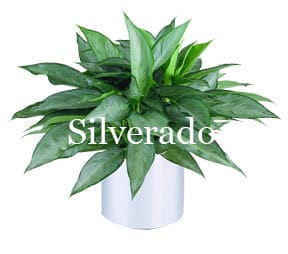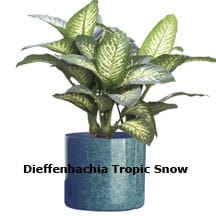Your cart is currently empty!
Analyze Your Home's Microclimate for Plants
In the microclimate of today’s modern home, houseplants can serve dual purposes – cleaning air plus adding beauty, color and life to a room.
But, if you’re just getting started and want to begin adding plants in a room.
There are some questions you need at ask to have the right – indoor climates for healthy houseplants – before buying or adding any plants?
Four questions to help zero in on your rooms growing conditions:
- What’s the lighting in the room? Sunny, partially lit or dark.
- What’s the indoor climate – the microclimate in the room?
- Is the room cold, cool, warm or hot in the summer and winter?
- Is the air in general moist or dry in the summer and what about the winter?
After answering these questions about growing houseplants… how would you characterize the overall environment of the room?
It’s important to remember you are providing an “environment” for your plants. Just as you want to create a good learning or home environment for your lifestyle or family, houseplants need an environment where they can flourish.
For example, bright areas with lots of sun or bright light year round a Ficus, Dieffenbachia cane, Dracaena fragrans or a Bamboo Palm may be just the ticket. In rooms with lower light another option is Dracaena Janet Craig or Aglaonemas may be a better choice. Answering these questions will go a long way to helping you discover if your room is right for plants and what plants will do well in that space.
Table of contents
Which to choose: a Sunny Room, Dark or Partially Lit!

In any indoor environment nothing varies more widely than light!
In the morning in my home the sun peeks through the family room announcing the beginning of a new day. The afternoon brings a blazing sun through the window bathing a Dracaena and several Aglaonema with an abundance of bright indirect light.
The question is “How do you label a room… sunny, dark or in-between.” In between is a room with good bright but indirect light. What’s the difference in the room between the light in the summer and the lighting in the winter? It cost nothing test to help you determine the lighting where you want to place a house plant!
The Light Test!
On what you would consider a “normal bright day” take a plain sheet of white paper and put the paper where you plan on placing your plant. Now hold your hand about 12 inches or 30 cm for you metric readers above the paper. Take a look at your hand’s shadow; If it is:
- Clear and crisply defined we’ll call this a bright or sunny spot.
- Fuzzy or slightly blurred but still very recognizable as a hand this spot gets a medium light vote.
- If on the other hand (no pun intended) your shadow is hard to tell if there is a shadow or don’t see one at all this spot gets a low light or deep shade vote.
This gives you some ideas on plant selection before buying any houseplant.
Micro Climates and Plant Selection

A microclimate is a “mini-climate” which can vary from the overall big climate which surrounds it. Do you know the microclimates in your rooms?
A typical home will have many microclimates, which we can define as hotter, cooler, sunnier, shadier, wetter, or dryer than other parts of the room or house, plus this microclimate can change during the day depending on room color (light colors reflect more light), windows and amount of direct sunlight it receives. For example, grouping these sun-loving plants together can create a microclimate by creating more humidity where the plant are than in other parts of the room.
A bright room will have some darker areas, these will usually be on the otherside of the room away from the window or on either side of the window.
Areas directly in front of or above a heater will be hotter and drier than other parts of a room. All these climatic conditions have an affect on the care of houseplants.
When buying plants for your home which that require lots of light they will most likely need to be placed in front of a window where the light is the brightest.You use dish soap for dishes and a different soap for your laundry. Why? Because the soaps were made or work better in the “conditions” they need to do the job.
Cool Room, Hot Room

Looking at the indoor temperatures, how exactly would you classify the “plant room” or space from a temperature point of view? Rooms vary in air temperature from season to season. It’s possible to have a cold room in the winter and a hot room in the summer.
For example, during the winter months do you need an extra layer of clothing while sitting in the room?
Granted some people are more sensitive to cold air or wind but if this doesn’t describe you the room could be labeled as a – cool winter room. If the family will never venture into the room without a thick blanket or heavy winter coat, the rooms definitely on the cold side.
If during the heat of summer the same room needs to have the blinds adjusted or pulled to reflect the suns rays and keep the heat out. This room would be labeled – hot in the summer!
If the room keeps a nice fairly even temperature all year round we would categorize this room as warm.
All this information helps you in your indoor plant selection. Not only does it help with plant choices but also plant varieties.
Some of the new plant varieties have been breed specifically to handle or tolerate cooler indoor temperatures. A palm may be better than a Dracaena or new variety of Aglaonema like Silverado do well where an older varieties do not. Take these all into account when buying your houseplants.
Humidity in Your Home

Houseplants – dry air, moist air, winter, summer what’s a plant to do with… so many “seasons” indoors!
Plants used indoors are use to more humidity than you find in the average home. There are several methods you can use to figure out the humidity in your home. But why? The level will be nothing compared to a greenhouse or nursery!
The best method is probably to assume your home is always dry. The air-conditioner runs in the summer and the heater warms the air in the winter. Plants don’t fit into the comfort equation when people are involved.
The only places in a home to possibly qualify for a humid place under plant standards would be bathrooms, laundry rooms and basements.
However, armed with above information about your home or indoor garden – the indoor lighting, overall temperature and humidity you’ll be in a better position when you’re ready to purchase a house plant.
Nothing can stop gardeners from succeeding with plants indoors – let me say that again — NOTHING – will stop gardeners like you from enjoying plants indoors and have them look great… if you have a healthy climate, pick the right plants for the right places.
Share with Family and Friends
Featured Authors
Visit a Botanical Garden For Unique Experiences.
Comments
Logging in to comment gives you more features, but it is not required.
Subscribe
0 Comments
Oldest












